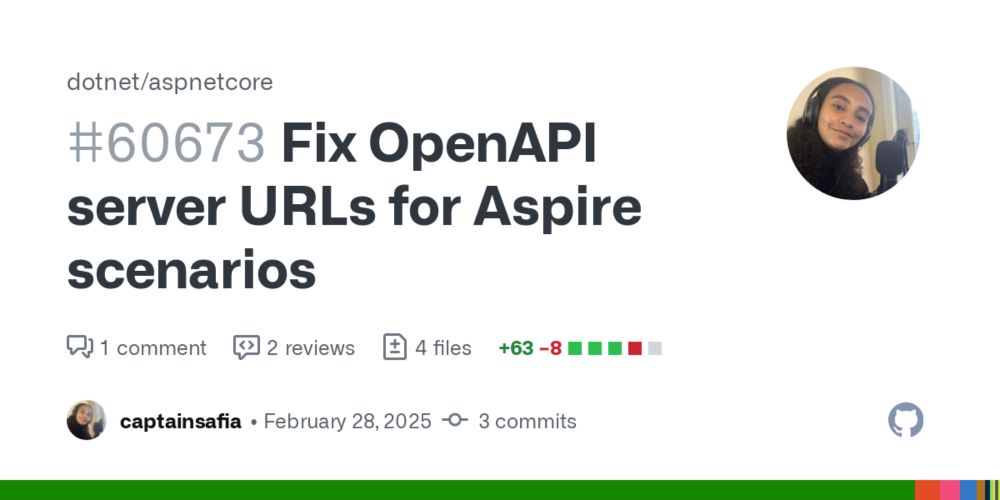
Apple,
Orange,
Pear = Apple,
Banana
}
What would you expect the output of Console.WriteLine(Fruit.Banana); to be?
I at least was surprised to see that it is Orange. Such a weird quirk with high potential for bugs.
Apple,
Orange,
Pear = Apple,
Banana
}
What would you expect the output of Console.WriteLine(Fruit.Banana); to be?
I at least was surprised to see that it is Orange. Such a weird quirk with high potential for bugs.
And the name for the feature writes itself: pattern assignment!
And the name for the feature writes itself: pattern assignment!
I really hope that it will be used in non .NET projects since that would be another great entry point to the ecosystem.
I really hope that it will be used in non .NET projects since that would be another great entry point to the ecosystem.
Because when you need an apphost your original project most likely is already using a csproj.
What kind of scripts would even require an apphost that would make this change meaningful?
Because when you need an apphost your original project most likely is already using a csproj.
What kind of scripts would even require an apphost that would make this change meaningful?
Just look at the box and the shapes that are supposed to look like rabbits. Then the text below the ribbon. ...
Just look at the box and the shapes that are supposed to look like rabbits. Then the text below the ribbon. ...
Screw you great dev experience! What shall I do now? 🤣
Screw you great dev experience! What shall I do now? 🤣
Thanks for the heads-up!
Thanks for the heads-up!
So onwards to the download and let's see if I can remove my workaround!
github.com/dotnet/aspne...

So onwards to the download and let's see if I can remove my workaround!
github.com/dotnet/aspne...
I could solve my issue by not using Env Vars but by setting the servers to an empty array. Scalar then picks window.location as a fallback.
Which is fine for now.
I could solve my issue by not using Env Vars but by setting the servers to an empty array. Scalar then picks window.location as a fallback.
Which is fine for now.
I want to be able to send my requests in Scalar against Aspires reverse proxy. Which means I have to introduce an Environment Variable that will set the server to the reverse proxies URL
I want to be able to send my requests in Scalar against Aspires reverse proxy. Which means I have to introduce an Environment Variable that will set the server to the reverse proxies URL
Though that means I will most likely have to implement this myself since the video does not deal with multiple instances
Though that means I will most likely have to implement this myself since the video does not deal with multiple instances
Maybe this will solve my issue 🤞
Maybe this will solve my issue 🤞
But trying to run a test request only allows going against one instance of the APIs. Probably the one the reverse proxy hit when opening Scalar.
But trying to run a test request only allows going against one instance of the APIs. Probably the one the reverse proxy hit when opening Scalar.
At least it looks like it always switches between my 2 instances.
At least it looks like it always switches between my 2 instances.
The reverse proxy uses the port defined in the launchsettings of my project and the projects themselves get own Ports by Aspire.
The reverse proxy uses the port defined in the launchsettings of my project and the projects themselves get own Ports by Aspire.
WithReplicas is what I should have used from the get go.
And the reverse proxy mention makes it clear to me why both instances of my API showed the same Port in the dashboard which wasn't the one from the launchsettings.
WithReplicas is what I should have used from the get go.
And the reverse proxy mention makes it clear to me why both instances of my API showed the same Port in the dashboard which wasn't the one from the launchsettings.

